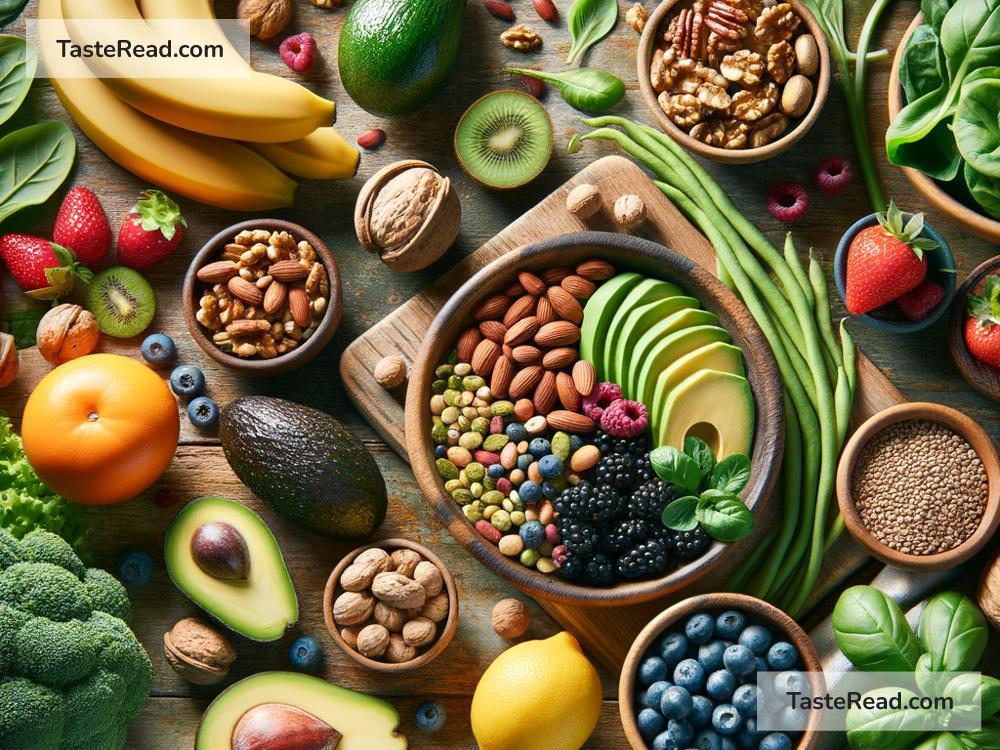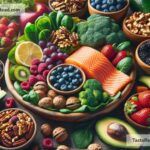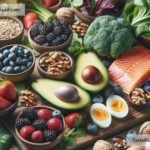7 Foods That Help Manage Disordered Eating
Disordered eating can take many forms, from binge eating and skipping meals to obsessing over “good” and “bad” foods. Managing it often involves addressing both emotional and physical struggles. While therapy and support are key to recovery, certain foods can play a helpful role in healing your body and mind. Eating nourishing foods can stabilize energy levels, improve your mood, and rebuild your relationship with food.
If you’re working on reducing disordered eating, here are seven types of foods to focus on:
1. Whole Grains for Steady Energy
Whole grains like oatmeal, brown rice, quinoa, and whole-grain bread provide complex carbohydrates that release energy slowly. They help keep your blood sugar stable, which is important because blood sugar spikes and crashes can make you feel irritable or anxious. Balanced energy levels can reduce the urge to binge or restrict, especially if you’ve struggled with eating patterns that leave you exhausted.
Whole grains also contain fiber, which keeps you full longer and helps prevent overeating. Try starting your day with a bowl of oatmeal topped with fresh fruit for a comforting, nourishing meal.
2. Protein for Stable Hunger
Proteins like chicken, fish, eggs, nuts, beans, and yogurt are key to balancing hunger and feeling satisfied after meals. Protein takes longer to digest, which means it keeps you full and helps you avoid extreme hunger. When you don’t let yourself get too hungry, it’s easier to make mindful food choices and avoid feeling out of control.
Proteins also help repair your muscles and tissues, which can be important if your body has been under stress from disordered eating. Pair lean proteins, like grilled chicken or tofu, with whole grains and veggies for a well-rounded meal.
3. Healthy Fats for Fullness and Brain Health
Healthy fats found in foods like avocados, nuts, seeds, olive oil, and fatty fish (like salmon) do more than just make meals taste good; they also play an important role in reducing cravings and improving brain function. Fats help you feel full and satisfied after eating, which can make it less tempting to overeat or turn to unhealthy snacks.
What’s more, your brain needs fats to function properly. Omega-3 fatty acids, found in foods like walnuts and salmon, can improve your mood and mental clarity. This is especially helpful if disordered eating has affected your emotional well-being.
4. Fresh Fruits and Vegetables for Nutrients
Fruits and vegetables are packed with vitamins, minerals, and fiber that your body needs to recover and feel its best. After struggling with disordered eating, you might be missing key nutrients that impact your mood, energy, and digestion. Eating a colorful variety of fruits and vegetables can replenish those nutrients.
Try incorporating a range of colors into your meals—red tomatoes, orange carrots, yellow bell peppers, green spinach, blueberries, and purple eggplant. Each color offers unique antioxidants to support your overall health, and the natural sweetness of fruits can help satisfy sugar cravings in a balanced way.
5. Fermented Foods for Gut Health
Fermented foods like yogurt, kefir, sauerkraut, kimchi, and kombucha contain probiotics that support a healthy gut. Your digestive system plays a big role in how you feel physically and emotionally. A healthy gut can improve digestion, boost your immune system, and even help balance your mood.
If your eating patterns have been irregular, your gut health might be off track. Adding probiotic-rich foods into your diet can help restore balance and promote regular digestion. Pair yogurt with fresh fruit or add kimchi as a side dish to start including these foods.
6. Comfort Foods in Moderation
When dealing with disordered eating, it’s important to rebuild a balanced relationship with food. This means allowing yourself to enjoy comfort foods in moderation without guilt. Restricting these foods completely can lead to cravings and binge episodes later.
Whether you love pasta, pizza, chocolate, or ice cream, you can include these foods in your meals occasionally. Remember, all foods fit in a balanced diet. The key is learning to eat them mindfully and savor them rather than using them as an escape or punishment.
7. Hydrating Foods and Drinks
Disordered eating can sometimes cause dehydration, especially if you’ve struggled with binge eating or purging episodes. Hydration is essential for feeling energized, improving digestion, and reducing headaches or fatigue. While drinking water is important, you can also hydrate through foods like watermelon, cucumber, oranges, and soups.
Herbal teas or infused waters (like lemon water or cucumber water) can also make hydration more exciting. Staying hydrated helps your body work at its best and supports recovery.
Tips for Recovery
- Eat regularly: Aim for three balanced meals and two snacks a day to stabilize your body and reduce extreme hunger or overeating.
- Practice self-compassion: Changing your eating habits takes time. Don’t be hard on yourself if you slip up—recovery is a journey.
- Seek support: Therapy, support groups, or talking to loved ones can make a big difference in managing disordered eating.
Food is not just fuel—it’s also about connection, enjoyment, and taking care of your health. By focusing on these nourishing foods, you’re giving yourself the tools to overcome disordered eating and rebuild trust with your body.


